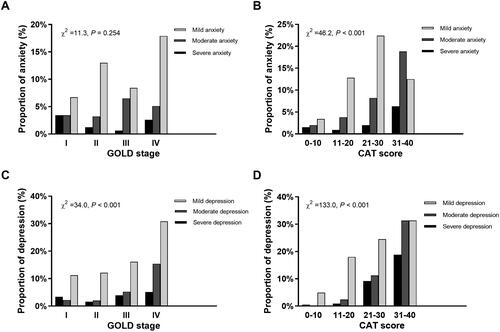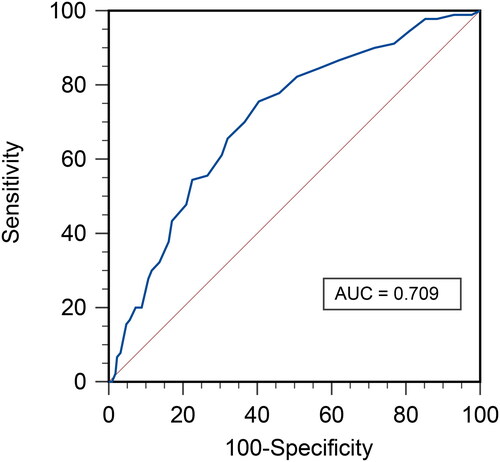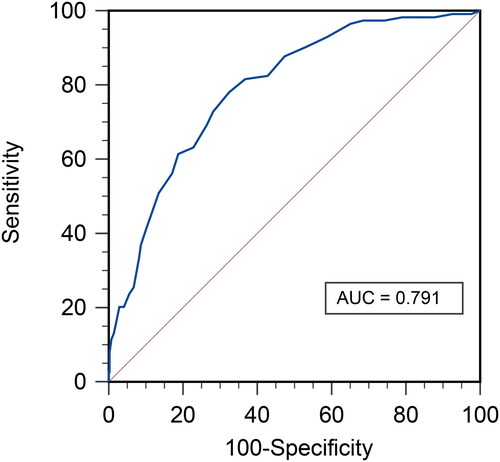Figures & data
Table 1. Demographic and clinical characteristics of the enrolled patients.
Table 2. Demographic and clinical characteristics of patients categorized by anxiety or depression status.
Figure 1. Proportion of mild, moderate, and severe anxiety categorized by GOLD stages (A) and CAT scores (B). Proportion of mild, moderate, and severe depression categorized by GOLD stages (C) and CAT scores (D).
Mild anxiety: 5 ≤ GAD-7 ≤ 9; moderate anxiety: 10 ≤ GAD-7 ≤ 14; severe anxiety: 15 ≤ GAD-7 ≤ 21; mild depression: 5 ≤ PHQ-9 ≤ 9; moderate depression: 10 ≤ PHQ-9 ≤ 14; severe depression: 15 ≤ PHQ-9 score ≤ 27.

Table 3. Multivariable logistic regression analysis of the factors associated with anxiety and depression in patients with COPD.
Figure 2. The receiver operating characteristic (ROC) curve of CAT for identifying anxiety (GAD-7 ≥ 5).

Figure 3. The receiver operating characteristic (ROC) curve of CAT for identifying depression (PHQ-9 ≥ 5).

Table 4. Operating characteristics of the CAT for identifying anxiety and depression.
Table 5. Operating characteristics of CAT ≥15 for identifying anxiety and depression among patients from different GOLD stages.
Figure 4. Comparison of area under the curve (AUC) values of individual CAT items, respiratory components, non-respiratory components, and total CAT score for identifying anxiety (A) or depression (B). Respiratory components: cough + phlegm + chest tightness + breathlessness going up a hill/stairs. Non-respiratory components: activity limitation at home + confidence leaving home + sleep + energy.

Supplemental Material
Download PDF (362.5 KB)Availability of data and materials
The datasets generated and analyzed during the current study are not publicly available because other studies involving this data are in the progress, but are available from the corresponding author on reasonable request.
